Description
KEY INGREDIENTS COMPOSITION OF HIMALAYA ASHWAGANDHA TABLETS
As backed by Ayurved and modern science

Ashvagandha
Ashvagandha augments immunity by improving immune factors and the level of white blood cell activation, especially Natural Killer (NK) cells, which play a major role in neutralizing virus-infected cells and help restrain infections.
HOW TO USE AND DOSAGE OF HIMALAYA ASHWAGANDHA TABLETS
1 HIMALAYA ASHWAGANDHA TABLETS twice daily or as directed by your physician.
ADDITIONAL INFORMATION ABOUT ASHWAGANDHA
Ashwagandha Benefits, Uses, Dosage & Side Effects

Ashwagandha (Withania Somnifera) helps in improving immune system. It is a potent adaptogen and aphrodisiac herb used in impotency, cancer, frequent miscarriage, uterine weakness, infertility, asthma, anemia, cancer, arthritis (osteoarthritis, gout, rheumatoid arthritis), anxiety, stress, depression, ADHD (Attention deficit hyperactivity disorder), cerebellar ataxia, diabetes, high cholesterol, infertility, Parkinson’s disease, fibromyalgia etc.
Ashwagandha (also known as Indian ginseng) is used in Ayurveda since a very long time as a crucial part of ayurvedic treatment for several health conditions. In Ayurveda, Ashwagandha is Rasayana (potent rejuvenative agent). It is acknowledged to increase the vitality and longevity. It improves memory, preserve mental functions and increases intelligence. It protects brain from degeneration and dementia. Due to its anti-inflammatory properties, it is widely used in all inflammatory disorders.
The meaning of word Ashwagandha is ‘smell of horse’. It is named so for two important reasons – first is because roots of Ashwagandha emit the smell of horse. Second reason is – it is believed that consuming Ashwagandha in any form may develop or improve vitality, energy levels and strength similar to that of a horse. Ashwagandha is available in the market as a single herb formulation or in combination with other herbs.
BOTANICAL DESCRIPTION
Scientific Name of Ashwagandha is Withania Somnifera. In Latin, the meaning of Somnifera species is ‘sleep inducing’.
Common Names
| English Name | Indian ginseng, Indian winter cherry, poison gooseberry |
| Hindi Name | Ashwagandha, Asgandh |
| Sanskrit Name | Ashwagandha, Ashvagandha, Gandhapatri, Ashvakandika, Palashaparni |
| Ayurvedic Name | Ashwagandha |
| Also Spelled As | Ashwaganda, Aswagandha, Ashwaghanda, Ashvagandha, Ashwangandha, Ashwgandha |
Botanical Classification (Plant Taxonomy)
| Kingdom | Plantae |
| Sub-Kingdom | Viridiplantae |
| Infra Kingdom | Streptophyta (Land Plants) |
| Super Division | Embryophyta |
| Division | Tracheophyta (Tracheophytes or Vascular Plants) |
| Sub Division | Spermatophytina (spermatophytes or Seed Plants) |
| Class | Magnoliopsida |
| Super Order | Asteranae |
| Order | Solanales |
| Family | Solanaceae (Nightshades) |
| Genus | Withania (PAUQUY) |
| Species | Withania Somnifera |
Plant Description
| Native Region | It is cultivated in various regions of India such as NEEMUCH, MANASA, JAWAD TEHSILS of the MANDSAUR district of Madhya Pradesh, Punjab and Rajasthan. It is also distributed in Afghanistan, Baluchistan, Sri Lanka, Mediterranean regions, the Canneries and Cape of Good Hope. |
| Height | Ashwagandha is a short perennial shrub that grows 35-75 centimeters tall. |
| Habitat | A dry climate is required for growth of Ashwagandha. |
| Leaves | Ashwagandha leaves are simple, ovate, elliptic and dull green in color. They are usually 10-12 centimeters long. |
| Flowers | Ashwagandha flowers are tiny and bell-shaped around 1 centimeter long. Very few flowers are 5 centimeter long. They have a beautiful green or lurid yellow color. |
| Fruits | The fruits (berries) are orange-red in color when they reach a mature (ripe) stage and they have a diameter of 6 millimeter. |
| Seeds | Seeds have a diameter of 2.5 millimeter and they are yellow in color. |
| Roots | Ashwagandha roots are stout and fleshy when dry. They are unbranched, straight and gradually tapering downwards. Roots have a brownish white color on the outer side and the inner region is creamy white in color. |
MEDICINAL PARTS OF ASHWAGANDHA
Generally, roots are used in ayurvedic medicine for aphrodisiac and rejuvenative purposes. Other parts of Ashwagandha including leaves, seeds and flowers also possess therapeutic properties.
Roots
Roots of Ashwagandha are highly valued for its medicinal properties. It is used as a narcotic, aphrodisiac, astringent, diuretic, anthelmintic (expels parasites out of the body) and a stimulant. It is also used for the treatment and management of Leukoderma (a skin disorder), nervous breakdown, constipation and goiter. A paste made from Ashwagandha roots can be applied for the treatment of painful swellings and ulcers.
Leaves
Ashwagandha leaves possess medicinal properties. These are recommended in painful swellings and fever.
Seeds & flowers
Ashwagandha seeds are anthelmintic (expels parasites out of the body), whereas its flowers are diuretic and aphrodisiac. (1)
PHYTOCHEMISTRY (ACTIVE CONSTITUENTS)
Various health-promoting compounds are present in different parts of Ashwagandha plants. Roots of Ashwagandha contain volatile oils, amino acids, alkaloids and starch. Ashwagandha leaves and fruits are loaded with flavonoids and tannins. These flavonoids act as antioxidants and neutralize the free radicals. They help to fight against oxidative stress and reduce the level of inflammation. Different kinds of amino acids present in different parts of Ashwagandha include:
- TRYPTOPHAN
- GLYCINE
- TYROSINE
- ALANINE
- CYSTINE
- PROLINE
- VALINE
- ASPARTIC ACID
- GLUTAMIC ACID (2)
NUTRIENTS IN ASHWAGANDHA
Ashwagandha is loaded with different minerals such as phosphorus, calcium, potassium and magnesium. Good amount of manganese, iron, zinc and copper are present in Ashwagandha that is grown and cultivated in different regions. It is believed that a dry climatic condition contributes to maximum values of nutrition in Ashwagandha plant. Thus, it can be said that habitat and geographical features influence the nutritional composition of Ashwagandha. (3)
MEDICINAL PROPERTIES
- Aphrodisiac
- Rasayana (Rejuvenating)
- Anti-inflammatory
- Anodyne
- Anti-depressant
- Anti-stressor
- Immunomodulatory
- Adaptogenic
- Antioxidant
- Anti-arthritic
- Carminative
- Uterine tonic (beneficial in uterine disorders, endometriosis and uterine pain and provides strength to uterus)
- Cardioprotective
- Alterative
- Anti-diabetic
- Anti-ulcerogenic
- Anti-cancer
- Mild antihypertensive
- Mild Anti-asthmatic
- Hematogenic
- Anti-malarial
- Nervine sedative
- Mild Hypnotic
- Anthelmintic (leaves)
- Diuretic (seeds)
- Anabolic effect
AYURVEDIC PROPERTIES
| Taste – RASA | TIKTA (Bitter), KATU (Pungent) & MADHURA (Sweet) |
| Main Quality – GUNA | LAGHU (Light) & SNIGADH or SNEHA (Unctuous or Oily) |
| Potency – VIRYA | USHNA (Hot) |
| Resultant – VIPAKA | MADHURA (Sweet) |
| Therapeutic Effect – PRABHAVA | Rejuvenation & Tonic |
| DOSHA KARMA (Effect on Humors) | Pacifies KAPHA & VATA |
| Dhatu (Tissue) Effect | All – RASA, RAKTA, MAMSA, MEDAS, ASTHI, MAJJA & SHUKRA |
| Beneficial for Organs | All organ especially brain, heart, muscles, bones, joints, uterus, ovaries, testes, thyroid gland, adrenal gland |
| Impact on Mind | Calm the mind |
THERAPEUTIC INDICATION OF ASHWAGANDHA
Ashwagandha has powerful healing properties, so it is widely prescribed by ayurvedic doctors. It is used as general health tonic, energy booster, debility after disease and for increasing vigor and strength. The detailed indications of Ashwagandha are as follows:
Psychological Problems
- Anxiety
- Depression
- Stress
- Mental Agitation
- Irritability
- Drug addiction treatment & rehabilitation (as a supportive therapy)
- Emotional trauma
- Sadness and drowsiness
- ADHD (attention deficit hyperactivity disorder)
- Manic depressive psychosis
- Generalized anxiety disorder
- Post-traumatic stress disorder
- Social anxiety disorder
- Anorexia nervosa
- Sleeplessness or insomnia
- Schizophrenia (as a supportive therapy only)
Neurological Disorders
- Chronic headache
- Migraine
- Dementia
- Alzheimer’s disease
- Vertigo
- Parkinson’s disease (as a supportive therapy along with Kaunch beej/mucuna prunus)
- Memory loss
- Atrophy of the brain
- Seizures
- Epilepsy
- Nystagmus (eyeball involuntary movement) along with rajat bhasma
- Amnesia
- Delirium
- Learning disabilities in children
Muscle, Joint & Bone Disorders
Ashwagandha decreases joint inflammation and swelling. It is also reported be beneficial in decreased bone density along with arjuna and hadjod herbs.
- Osteoarthritis
- Rheumatoid arthritis
- Gout
- Frozen shoulder
- Cervical spondylosis
- Lumbar spondylosis
- Sciatica (sciatic nerve pain)
- Osteoporosis or decreased bone density
- Muscle pain
- Fibromyalgia
Men’s Health
- Male infertility
- Impotency
- Erectile dysfunction
- Oligospermia
- Loss of libido
Women’s Health
- Uterine weakness
- Frequency and recurrent miscarriages
- Leucorrhea
- Underdeveloped female organs
- Loss of libido
- Postpartum depression
- Female infertility of unknown origin
ASHWAGANDHA (WITHANIA SOMNIFERA) BENEFITS & USES
Since 6000 years, Ashwagandha has been used as a traditional medicine in India. Ashwagandha holds the most prominent place among all the Ayurvedic ‘Rasayana’ herbs. Ashwagandha powder (churna) is usually consumed by mixing it with almond milk coconut milk or water. Various studies have showed that Ashwagandha has beneficial effect on different systems of the body. It promotes a healthy reproductive balance and improves the function of overall reproductive system. It also improves memory and cognition by enhancing the function of the nervous system and brain. Ashwagandha boosts the immunity by improving the body’s defense against various diseases. Besides this, it also plays an important role in the management of various diseases and disorders such as diabetes mellitus, liver diseases, cardiovascular diseases, hypertension, cancer, gastric ulcers and arthritis.
Ashwagandha Use as Tonic
Ashwagandha (in form of Churna or powder) is beneficial in lower dosage (500 mg) for preventing diseases by boosting immune system functions. It enhances non-specific immunity. It alleviates stress, increases physical stamina, and improves overall health.
For tonic and Alterative purposes, 500 mg of Ashwagandha power (churna) should be taken with water throughout the life. In India and Sri Lanka, ancient Vaidya (ayurvedic doctors) were using this remedy in their families since 3000 years.
Heart Diseases
Ashwagandha is a reputed health tonic that is used in the treatment and management of heart diseases. Oxidative stress and increased load of free radicals increases the pressure and burden on the heart. This compromises the functioning of the heart and affects its structure too. Ashwagandha is considered a heart-protective antioxidant that scavenges free radicals and reduces oxidative stress. It further inhibits lipid peroxidation (degradation of lipids). Such a property of ashwagandha is comparable to that of vitamin E. A study found that treatment with ashwagandha improved overall heart health in patients with heart diseases by increasing the heart rate, contractility and relaxation.
Furthermore, ashwagandha has energy boosting properties that provides energy to the heart and improves the overall functioning. It also protects the heart by inhibiting the markers of inflammation that may otherwise cause damage to the heart by increasing inflammation. Besides this, the structure of ashwagandha is similar to that of DIGOXIN, a drug used in the treatment of heart.
Stress is another major factor that causes heart diseases. Research has found that ashwagandha alleviates stress-induced changes and reduces the overall stress levels. Such an anti-stressor effect of ashwagandha improves the overall health of heart, increases its weight and increases duration of contractility. (4, 5)
In Ayurveda, Ashwagandha is used along with Arjuna. Ashvagandha & Arjuna Ksheer is more beneficial for heart patients experience debility and exhaustion.
Hypertension (High Blood Pressure)
A very interesting research published in 2012 evaluated the effect of ashwagandha root powder on hypertensive individuals. These individuals were treated with 2 grams of ashwagandha root powder along with water. A drop in both diastolic and systolic blood pressure levels was observed. A positive link is found between stress and high blood pressure. Ashwagandha reduces high blood pressure levels by inducing a calming effect and by reducing the stress levels. Therefore, ashwagandha can be used in the treatment of hypertension as an adjunct with conventional agents or as a natural alternative. (6)
In Ayurveda, Ashwagandha is commonly used for high blood pressure in following combination:
| Ayurvedic Remedies | Quantity |
| Ashwagandha powder | 2000 mg * |
| Arjuna Churna | 1000 mg * |
| Jatamansi (Spikenard) – Nardostachys Jatamansi | 500 mg * |
| Mukta Pishti | 125 mg * |
| Abhrak Bhasma | 60 mg * |
| Sarpagandha – Rauvolfia Serpentina powder | 50 mg *+ |
| * Twice daily with water | |
| + In pre-hypertension & mild hypertension, Sarpagandha powder is not required. This Ashwagandha combination is highly effective in moderate hypertension. In severe hypertension or stage 4 hypertension, Sarpagandha powder dosage should be increased to 250 mg twice daily in this combination. | |
Stress, Anxiety & Depression
Ashwagandha has gained recognition recently as anti-anxiety and anti-stress agent. It is an adaptogenic herb, which raises the ability of the body to resist the damaging effect of stress on the body. Thus, it restores normal physiological functioning. It also helps in reducing the level of stress hormones. Ashwagandha further improves the overall quality of life.
Various studies have shown positive results for stress reducing activity of ashwagandha. A human trial with 64 healthy subjects observed the effect of ashwagandha on stress, anxiety and depression. Out of 64, 32 subjects were treated with ashwagandha for 60 days. At the end of treatment, it was found that the level of stress hormone ‘cortisol’ had reduced significantly in the group treated with ashwagandha. A significant reduction in different measures of stress such as anxiety, depression and insomnia was observed. Furthermore, no harmful or toxic effects were found after consumption of ashwagandha for 60 days. Thus, ashwagandha root extract has the ability to improve the well-being of a person. (7)
The following Ashwagandha combination is highly for mental stress, anxiety disorders and depression.
| Herbs | Quantity |
| Ashwagandha powder | 1000 mg * |
| Brahmi (Bacopa Monnieri) powder | 1000 mg * |
| Gotu Kola (Centella Asiatica) | 1000 mg * |
| Jatamansi (Spikenard) – Nardostachys Jatamansi | 500 mg * |
| * Twice daily with water | |
| Almond milk is also a good adjuvant if patient also experience severe mental fatigue. In such case, Ashwagandha dosage should be increased to 2000 mg twice daily. | |
Alzheimer’s Disease
A rat study published in 2012 found that ashwagandha root extract play a beneficial role in reversing Alzheimer’s disease. It was observed that ashwagandha contains health-promoting compounds that promote cognition, and increase memory. It also promotes growth of brain cells, improves brain health and reverses behavioral deficits. Alkaloids present in ashwagandha increase the clearance of toxic amyloid (protein fragments that get deposited in the brain and affect cognition) and prevent further damage. Thus, ashwagandha root is an amazing food for brain that improves cognition, memory, concentration level and overall quality of life. (8)
Muscle Weakness
It has been found that ashwagandha plays an important role in strengthening the muscles. Ashwagandha capsules when given to subjects for 30 days resulted in increase in muscle mass activity and increased muscle force in upper extremity, lower extremity and trunk region. Improvement was also observed in hand grip strength. A reduction in body fat percentage and increase in muscle mass was observed. This clearly indicates that ashwagandha promotes muscle activity and strength. The exercise intensity and tolerance also improved. Thus, aged people who have less muscle strength can use ashwagandha. (9)
Arthritis
Arthritis is a painful, inflammatory condition of the joints. Research has found that ashwagandha plays an anti-arthritic role by reducing the inflammation. Furthermore, it reduces the pro-inflammatory markers of inflammation and increases the anti-inflammatory markers. It also improves the overall antioxidant status and prevents the production of reactive oxygen species. Treatment with ashwagandha reduces the level of inflammation that further improves signs and symptoms of arthritis such as swelling, redness, tenderness and improves the overall flexibility of joints. (10, 11)
The following Ashwagandha combinations are used in ayurveda as per different types of Arthritis.
Osteoarthritis
| Herbs | Quantity |
| Ashwagandha powder | 2 grams * |
| Mulethi (Yashtimadhu) – Licorice – Glycyrrhiza Glabra | 1 gram * |
| Gokshura (Tribulus Terrestris) | 1 gram * |
| Nagarmotha (Cyperus Rotundus) | 250 mg * |
| Trikatu | 300 mg * |
| * Twice Daily with healing nut milk. | |
Rheumatoid Arthritis
| Herbs | Quantity |
| Ashwagandha powder | 2 grams * |
| Punarnava (Boerhavia Diffusa) | 1 gram * |
| Giloy – Tinospora Cordifolia | 1 gram * |
| Nagarmotha (Cyperus Rotundus) | 500 mg * |
| Trikatu | 300 mg * |
| * Twice Daily with warm water | |
Osteoporosis
Ayurvedic doctors use Ashwagandha powder for improving bone strength in osteoporosis. A study also proved that Ashwagandha improves bone calcification. Withanolides in Ashwagandha have potential anti-osteoporotic activity. (12)
The following Ashwagandha combination is beneficial in osteoporosis:
| Herbs | Dosage |
| Ashwagandha powder | 2 grams * |
| Arjuna – Terminalia arjuna | 1 gram * |
| Hadjod (Cissus Quadrangularis) powder | 1 gram * |
| * Twice Daily with healing nut milk. | |
In osteoporosis, you may also require other calcium supplements. In ayurveda, good natural calcium compounds are Godanti Bhasma (Calcined gypsum processed with herbs), Praval Pishti (coral calcium), Mukta Pishti (pearl calcium) and Mukta Shukti Pishti (pearl shell calcium). You can use some of these natural calcium supplements to increase bone mineral density.
Diabetes Mellitus
Research has found that ashwagandha roots and leaves play a very important role in lowering high blood glucose levels. Thus, it is considered very beneficial for the management of diabetes mellitus type-2. Ashwagandha works by replenishing the glycogen stores in the liver and it suppresses the release of the excess glucose in the blood thus, it helps to control blood sugar levels.
Scientific studies have shown that free radicals and oxidative stress causes damage and death of beta cells, main producers of insulin. Such damage reduces the production of insulin that further increases the blood glucose levels. In individuals with diabetes mellitus, the ability of insulin to stimulate glucose uptake reduces. It was found that treatment with ashwagandha improved insulin sensitivity and reduced insulin resistance. This further enhanced the uptake of glucose by cells and liver and thus reduced the amount of glucose that enters the blood. The result was restoration of delayed insulin response and improved glucose tolerance. (13, 14)
Cancer
A very interesting research has found that ashwagandha extract works by inhibiting human cancer cell lines of lung, breast and colon. Such anti-cancer property of ashwagandha was similar to that of cancer chemotherapy drug ‘DOXORUBICIN’. In fact, it was further found that ‘WITHAFERIN A’, a compound present in ashwagandha was more effective in inhibiting colon and breast cancer’s cell growth as compared to DOXORUBICIN. It also possess tumor preventing activity and immuno-stimulant properties.
In addition to this, ashwagandha prevents the growth, multiplication and spread of cancer cells to other parts of the body. Furthermore, it also offers protection against reactive oxygen species that play a causative role in the development of cancer. Ashwagandha has strong antioxidant and free radical scavenging properties. It neutralizes the free radicals and protects the body against oxidative stress.
Ashwagandha leaves also possess anti-cancer activity and it works by controlling the population of cancer cells in the body. Different health promoting compounds have been extracted from ashwagandha leaves that control the spread of cancer to other organs. Its leaves have found to be very effective in the treatment of breast cancer. Therefore, the mechanisms through which, ashwagandha helps in the prevention and treatment of cancer include – immunomodulator, antioxidant, anti-stressor, anabolic effect, reducing fatigue levels and improving the overall resistance of the body. (15, 16)
Liver Diseases
Excess alcohol intake or certain toxic drugs may cause damage to the liver and may interfere with its normal functioning. Toxic drugs cause generation of reactive oxygen species that cause damage to the liver cells. If not treated, it may further lead to liver necrosis (death of tissue). In such a condition, the levels of liver marker enzymes increase in the blood. Research has found that ashwagandha root extracts are cheap, easily available and relatively safe for the treatment of liver diseases. It prevents liver damage by restoring the normal structure of liver cells and by reducing the blood level of liver enzymes. Such a drop is a clear indicator that ashwagandha reduces the damage caused to the liver.
Production of toxins and free radical are the key players in liver damage. With an increase in the generation of reactive oxygen species, the amount of antioxidant enzymes decreases. Treatment with ashwagandha improved the antioxidant status by increasing the antioxidant enzymes such as catalase, superoxide dismutase, and reduced glutathione. Such strong antioxidant properties indicate that ashwagandha plays an important role in preventing the liver against the harmful effects. (17, 18, 19)
Peptic Ulcers
The main cause of ulcer is H. pylori infection or an imbalance between causative and protective factors. Drugs such as aspirin, excess alcohol intake and smoking increase the production of gastric acid and lead to the formation of gastric ulcers.
Research had found that ashwagandha roots in case of alcohol-induced ulcers reduced the number of ulcers, further incidence of ulcers and increased the factors that inhibit the formation of gastric ulcers. Furthermore, the effects of ashwagandha roots were similar to that of standard drugs used in the treatment of gastric ulcers. Such anti-ulcerogenic property of ashwagandha is attributed to the presence of flavonoids and antioxidants in it. Oxidative stress and excess of free radicals play a causative role in the development of gastric ulcers. NSAIDs, alcohol and smoking increase the burden of free radicals that cause damage to the inner lining of the stomach. Ashwagandha, a source of antioxidant works by scavenging the free radicals. Thus, the gastro-protective role is due to the presence of antioxidants and flavonoids in ashwagandha roots. (20)
Infections
Research has found that ashwagandha root as well as leaf extract possess anti-bacterial properties against Salmonella Typhimurium. Treatment with ashwagandha reduced the bacterial load in different vital organs and increased the survival rate of subjects with such infection. Different parts of ashwagandha such as roots, stems, fruits and leaves possess strong anti-microbial property. This property was attributed to the presence of flavonoids in free and bound form in different parts of ashwagandha.
It was further noted that ashwagandha had antimicrobial activity against 3 gram-negative bacteria such as Escherichia coli, Pseudomonas aeruginosa and Proteus mirabilis. It also protects against 3 fungi namely Aspergillus niger, Aspergillus flavus and Candida albicans. Flavonoid extract from ashwagandha root had the best activity against C. albicans.
Another study reported that ashwagandha leaves possess strong anti-bacterial activities and they are rich in anthocyanins too. Anthocyanins are a class of flavonoids that fight oxidative stress, scavenge free radicals and protect against the harmful action of bacteria. It was observed that phenolics, anthocyanins and ascorbic acid content of ashwagandha interfere with the action of pathogen and destroys it. It also inhibits the growth and multiplication of S. typhi that causes diseases such as food borne illnesses and typhoid. Due to such anti-microbial properties of ashwagandha, it has been used since ages for the treatment of diarrhea and other gastrointestinal disorders. Thus, it can be said that ashwagandha can be exploited further for its use in anti-microbial drugs in future. (21, 22)
Physical Weakness
Ashwagandha has strengthening action, so it helps reducing physical weakness and treating general debility after chronic disease. The following Ashwagandha combination is very effective treating physical weakness and improving physical stamina.
| Herbs | Quantity |
| Ashwagandha Churna | 2 grams * |
| Trikatu | 125 mg * |
| * Twice Daily with healing nut milk. | |
Male Infertility
The common cause of male infertility is oligospermia. Withania Somnifera along with other herbs improves the total count and quality of spermatozoa. The following combination ashwagandha churna helps in male infertility.
| Herbs | Quantity |
| Ashwagandha Churna | 2 grams * |
| Vidarikand – Pueraria Tuberosa | 1000 mg * |
| Shatavari (asparagus) | 500 mg * |
| Mulethi (Yashtimadhu) – Licorice – Glycyrrhiza Glabra | 500 mg * |
| Trikatu | 125 mg * |
| * Twice Daily with healing nut milk. | |
Female Infertility
In traditional medicines, ashwagandha is used in female infertility with unknown reason. In such case, ayurvedic doctors consider to maintain the optimum health of uterus, ovaries and all reproductive organs in females. Ashwagandha plays a role to provide strength and to maintain optimum health of these organs.
For this purpose, ashwagandha is taken after menstruation when the bed of endometrium starts proliferating (that means from the 5th day of menstrual cycle) for enhancing its support to appropriate Kapha build-up in the uterus, stimulating proper maturation of egg cells into follicles and for strengthening the uterus and other reproductive organs. During this phase, ashwagandha should be taken with coconut milk.
How to Use Ashwagandha for Female Infertility
- Take 10 grams of ashwagandha powder.
- Boil it in almond milk, and add sugar (Misri).
- The mixture should not be filtered to discard ashwagandha.
- This mixture should be taken in the morning on empty stomach. It should be used after the cessation of menstrual period up to 15 days.
Alternatively, 2 grams ashwagandha powder can be taken twice daily with healing nut milk.. You can also take Withania Somnifera extract capsule (500 mg ashwagandha extract) with coconut or almond milk twice a day.
Read More: Ashwagandha Use in Female Infertility and Recurrent Miscarriages
Menstrual Disorders
Ashwagandha Churna is used in menstrual disorders occurring due to Vata aggravation.
Can I take ashwagandha during period?
Yes, Ashwagandha Churna or powder tablets can be taken during menstruation (periods). It is more beneficial for menstrual disorders caused by Vata Aggravation. If you have following symptoms, then it will be beneficial:
- If menstrual blood is frothy, dark in color and menstruation occurs with light flow
- Vata types Pain (Prickling, spasmodic or sharp pain) in the lower abdomen
- Backache with similar characters of Vata type pains or with stiffness
- Anxiety
- Nervousness
- Fear
- Fatigue or exhaustion
When should I not take ashwagandha during period?
If you have no such symptoms of Vata aggravation, and have any of following symptoms of Pitta aggravation, then you should avoid taking it during periods.
- Pain with Burning sensation
- Feeling irritability and anger
- Menstruation occurring with heavy flow, fleshy or foul smelling
- Feeling warmness in the whole body
- Nausea or vomiting with Pitta aggravation
- Acne
- Tenderness in breasts
- Increase body temperature
In such cases, Yashtimadhu (Licorice – Glycyrrhiza Glabra) along with Amla (Indian gooseberry – Emblica Officinalis) and Praval Pishti are more beneficial.
Note: However, the low dosage of Ashwagandha (less than 1 gram per day) can still be taken in Pitta cases to manage anxiety and stress. It is considerably safe in such cases because its low dosage has little effects on the Pitta due to minimum hotness in its intrinsic nature. The effects of its hot potency can also be minimized taking it with coconut milk. But it is advised not to use it alone in Pitta cases.
Nutritional Deficiencies & Debility in Children
Marasmus and Kwashiorkor occur in children due to energy, carbohydrates and protein deficiency. However, altering diet and providing sufficient diet to the children during these diseases is a crucial part of the treatment. Along with dietary management, in holistic medicine, ashwagandha is used.
Sometimes, child becomes weak after prolonged sickness and if he is continuing suffering from some chronic ailments. In both cases, the following method should be adopted.
How to use ashwagandha in children – Recipe
- Take half glass of water and half glass of almond milk.
- Mix water and almond milk and put the pan with mixture on burner.
- Take 1 gram of ashwagandha powder and add it in the mixture.
- Boil it until it reduced to half i.e. alone almond milk remains and water gets evaporated.
- Cool it down and add sugar in this ashwagandha tea.
- Give this mixture to child once in a day.
This ashwagandha recipe helps a lot in quick recovery from debility, nutritional deficiencies and chronic diseases of children.
ASHWAGANDHA DOSAGE
Ashwagandha (Withania Somnifera) dosage varies from 250 mg to 6 grams as per health condition and age group. Its maximum dosage is 12 grams per day.
Ashwagandha Churna (Powder) Dosage
| The reference dosage of Ashwagandha Churna (powder) is as follows. | |
| Infants (Up To 1 year) | 250 mg * |
| Children (1 to 3) | 500 mg * |
| Children (4 to 10) | 750 mg * |
| Children (Above 10) | 1000 mg * |
| Adults | 3000 mg * |
| Pregnancy | 2000 mg * |
| Geriatric (Old age) | 2000 mg * |
| Maximum Possible Dosage | 12 grams per day (in divided doses) |
| * Twice a day with almond milk or coconut milk | |
| When to Take: Any Time, better is – 60 minutes Before Meal or 2 hours after meal. | |
Ashwagandha Extract Dosage
| The reference dosage of Ashwagandha Extract is as follows. | |
| Infants (Up To 1 year) | 25 mg * |
| Children (1 to 3) | 50 mg * |
| Children (4 to 10) | 75 mg * |
| Children (Above 10) | 100 mg * |
| Adults | 300 mg * |
| Pregnancy | 200 mg * |
| Geriatric (Old age) | 200 mg * |
| Maximum Possible Dosage | 1200 mg per day (in divided doses) |
| * Twice a day with almond milk or coconut milk | |
| When to Take: Any Time, better is – 60 minutes Before Meal or 2 hours after meal. | |
SAFETY PROFILE HIMALAYA ASHWAGANDHA TABLETS
A study conducted in 2012 to evaluate the safety levels of ashwagandha (Withania Somnifera). 18 young and healthy subjects were given ashwagandha capsules for 30 days and its dosage increased every 10 days (750 milligrams, 1000 milligrams and 1250 milligrams). The results showed that no symptoms or abnormality was detected at the end of 30 days. In addition to this, no clinically significant change was found in blood pressure, temperature and pulse. No changes were noted in hematological parameters, liver function test and blood glucose test. All parameters were within normal range at the end of this trial.
Thus, it can be said that ashwagandha capsules are safe to use and had no ill effects on overall health. Up to 4 grams of ashwagandha is considered safe and non-toxic for humans.
HIMALAYA ASHWAGANDHA TABLETS Side Effects
However, Ashwagandha (Withania Somnifera) is considerably safe for most people, but the rare and mild side effects of Ashwagandha may appear in some individual. These side effects generally occur when Ashwagandha is taken in larger doses (i.e. above 10 grams per day). Large doses of Ashwagandha can result in following side effects.
- Stomach Upset
- Loose Stools
- Male Breast or Gynecomastia – very rare, but it may occur when Ashwagandha powder is used in larger dosage (more than 10 grams per day) for several months (more than 6 months).
Withania Somnifera in natural form (Ashwagandha Churna or powder or decoction) is safer than ashwagandha extract derived through modern methods. However, water extract prepared through traditional methods by boiling water with Ashwagandha powder is also likely safer.
Ashwagandha in Pregnancy
(Is Ashwagandha safe during pregnancy?)
The safety of various herbs has been questioned during pregnancy. A very recent study published in 2015 has observed that ashwagandha extract causes no damage to the mother and developing fetus when consumed during pregnancy. No evidence of fetal toxicity and maternal toxicity was observed in rats who had consumed up to 2000 milligrams of Withania Somnifera extract. No pathological changes, body weight changes, behavioral changes, and skeletal and soft tissue malformations were observed. Thus, it can be said that ashwagandha is safe to consume during pregnancy. However, human trials are required to evaluate the effect of ashwagandha on humans. (23)
TRADITIONAL FORMULATIONS OF ASHWAGANDHA
- Ashwagandhadi Churna
- Asvagandha Rasayana
- Ashwagandha Ghrita (Ghee)
- Ashwagandharishta (Aswagandharishtam)
- Ashwagandha Kashayam
- Ashwagandha Churna
- Ashwagandha Extract Capsule
- Narayan Oil (Taila)
- Maha Narayan Oil
- Amukkara Choornam
- Amukkara Kizhangu Choornam
SOURCE : AYURTIMES

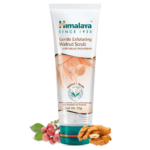
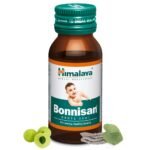
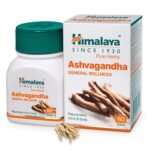
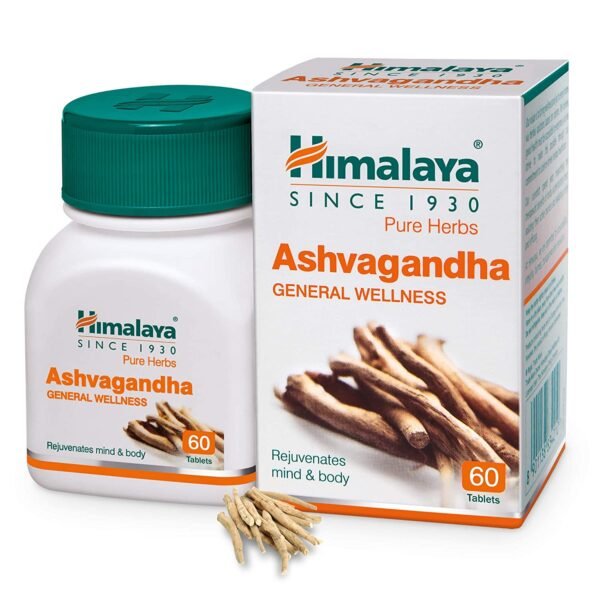
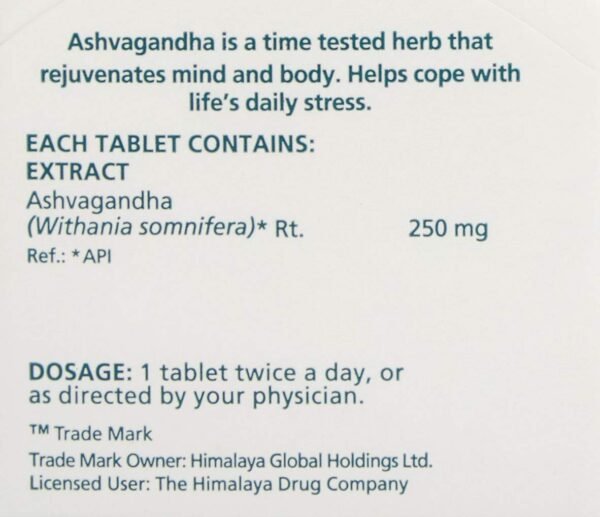


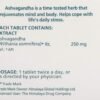




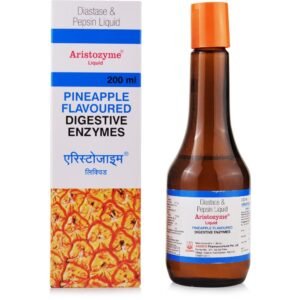
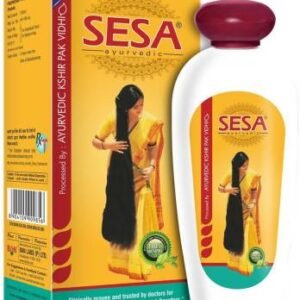

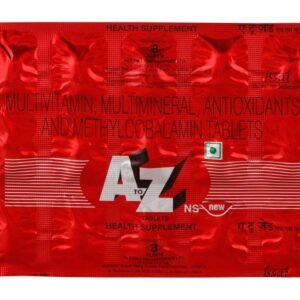
Reviews
There are no reviews yet.